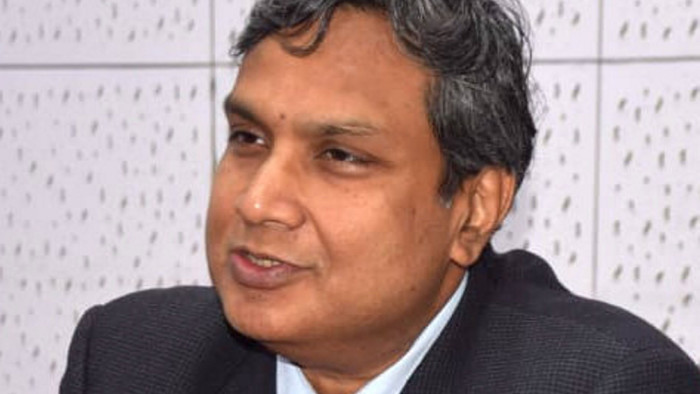Harnessing the power of AI for global health

Roula Khalaf, Editor of the FT, selects her favourite stories in this weekly newsletter.
With half a billion people in India needing far better access to high quality essential health services, the country’s growing digital expertise and infrastructure offer much scope to help improve lives. Yet it is also clear that the potential for innovation must be matched by careful governance.
Almost 400m people in India have smartphones, half a billion use the internet regularly, and mobile data costs are a tenth of the global average. Aadhaar, the Indian digital universal ID, a system of biometrically verifiable unique identification numbers, is now available to most of the country’s residents.
India has strong medical, technological and applied research institutions such as the All India Institutes of Medical Sciences, Indian Institutes of Technology and the Council of Scientific and Industrial Research. The country’s healthy democracy — the largest in the world — provides accountability.
There is a big shortage of trained physicians and nurses, but the many auxiliary health workers available means there is a great opportunity to use artificial intelligence and other technologies to support medical staff in their work.
Yet concerns about the applications of technology are emerging, not least over privacy, accountability and equality of access in order not to leave the poor behind. A new joint Lancet and Financial Times Commission, chaired by Ilona Kickbusch of the Graduate Institute of International and Development Studies in Geneva and me, is exploring these challenges.
In May last year, the World Health Assembly approved a resolution to prioritise the “development, evaluation, implementation, scale-up and greater utilisation of digital technologies, as a means of promoting equitable, affordable and universal access to health for all”.
The potential is significant. India has started digitising public health data flows, including centralised data visualisation and monitoring. National health guidelines are being incorporated into smartphone-based systems for community health workers.
Artificial intelligence can help tackle problems created by the lack of physicians for critical tasks such as X-ray screening for tuberculosis, trauma imaging for fractures, or screening for diabetic retinopathy. The quality of AI interpretations of X-rays is now close to that of human analysis, and sometimes better.
AI offers new possibilities. For example, a deep learning system trained to detect diabetic retinopathy, the leading cause of preventable blindness, was also able to determine age, gender and cardiovascular risk from the retinal photographs — something which no ophthalmologist can match.
Yet such “black box” applications — where the inner workings are not understood by humans — are also raising concerns. There are many examples of misclassification errors when using computers to analyse digital visuals that no human would make, betraying a lack of true understanding.
While human physicians are not misdirected by a patient’s skin colour, AI systems can be. Algorithms to read chest X-rays that work well in Africa have been shown to yield false positives in the Indian subcontinent. Trustworthy AI may be around the corner, but has not yet quite arrived.
Beyond technological issues, another key challenge is co-ordinating the diverse stakeholders responsible for effective digital health interventions, each of which has different guiding principles and incentives.
First, large amounts of potentially sensitive private health data — necessary to train algorithms — have to be collected from individuals or healthcare centres. Next, technologists and data scientists must develop algorithms validated by clinical researchers and approved by medical regulators. Finally, there must be scalable deployment of digital tools and the use of conventional infrastructure to accelerate distribution and uptake.
Yet patients and healthcare centres are often reluctant to share data, and call for cautious use of AI. In contrast, data scientists advocate open data sharing and rapid adoption of new technologies. Regulators and governments have to weigh the costs of inaction against the adverse effects of injudicious action.
Technology cannot be separated from philosophy in such decisions. Should a poor citizen, willing to share private data to get healthcare access, be the benchmark? Conversely, should data privacy and security concerns of those comfortably ensconced in a resource-rich setting be allowed to constrain development of new affordable and scalable AI-health systems?
A test of these principles came with legal challenges to the proposed applications of Aadhar. It has the potential to be a game-changer by efficiently linking multi-layered data, including health. But it is potentially intrusive, a subject of debates about access in rural areas, and concerns over security. The courts have upheld its basic validity but restricted its applications.
Framing a clear set of recommendations on the implementation and governance of digital health, AI and universal health coverage is a considerable task. This will be the focus of the Lancet/FT Commission.
A diverse set of independent commissioners will consider a wide range of voices and deliberate with a common concern over the next two years: how to exploit new technology while ensuring suitable regulation and governance are in place to improve the health and wellbeing of all, in particular those who are currently most excluded: women and children in low income and middle-income countries such as India.
The writer is director of the CSIR-Institute of Genomics and Integrative Biology in New Delhi, India, and joint chair of The Lancet/ FT Commission “Governing health futures 2030”
Tell us about the possibilities and pitfalls of digital health
How is digital health helping tackle disease? Do the hidden biases in artificial intelligence discriminate? Will limited bandwidth leave the poor further behind? The FT is exploring how technologies, products and applications can improve the health of the poorest and hardest to reach young people and children in the world.
We are looking for examples that should already — or have the potential to — improve outcomes in low and middle income countries. We also want to hear instances of and broader concerns about technology; and proposals for governance, regulation and pricing to limit the risks. This will help inform our reporting in the coming months.
• Submit your suggestions using the form here.

Comments